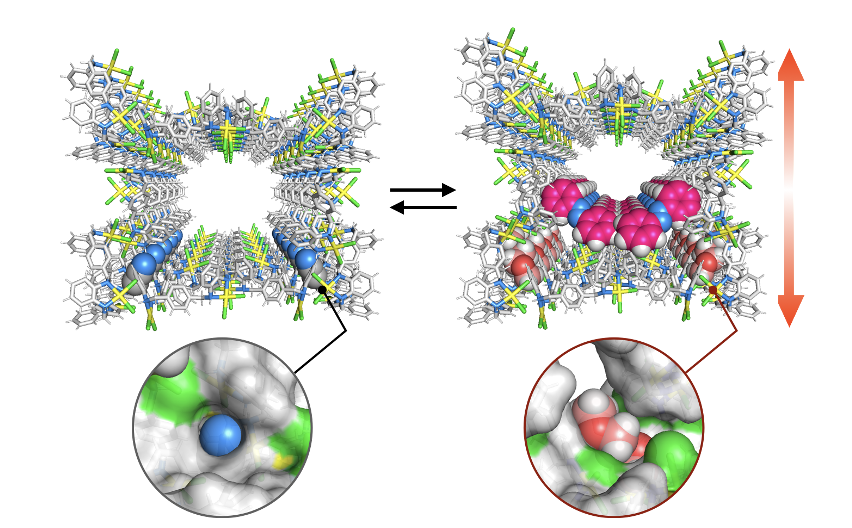DATE2023.08.10 #Press Releases
This porous shape-changing crystal works like an enzyme
The bio-inspired porous crystal may be used for molecular storage, separation, and detection, and as a catalyst or a sensor.
Aug 10, 2023
Researchers from the University of Tokyo have synthesized a porous crystal that can change shape when a molecule binds to it, which allows it to function like an enzyme.
The crystal looks like a miniature donut with a nanometer-sized pore. When a molecule binds to an appropriate location in the inner pore, it triggers the crystal shape change and leads to new functions. Such a phenomenon is called allosteric control. Biological enzymes work based on the same mechanism. But incorporating this mechanism in conventional porous materials was difficult until now.
In research published in Nature Communications, UTokyo researchers revealed a porous crystal with multiple molecular recognition sites in the nanopore. Such porous crystals have applications in molecular transport, sensing, and catalysis. It will help develop bio-inspired materials with high flexibility in their structure and function.

Figure. Allosteric control of the shape and function of crystalline nanopores. According to the type of effector molecule (shown in blue) that binds in the pores, the crystal can reversibly expand or contract vertically and horizontally. Even after the effector molecule occupies its site in the pore, the crystal can absorb other molecules and ions (shown in magenta). So it can store, separate, and detect various molecules.
For more details, please read the article:
Ryunosuke Hayashi, Shohei Tashiro, Masahiro Asakura, Shinya Mitsui, Mitsuhiko Shionoya. 2023. Effector-dependent structural transformation of a crystalline framework with allosteric effects on molecular recognition ability. Nature Communications. DOI: 10.1038/s41467-023-40091-6


